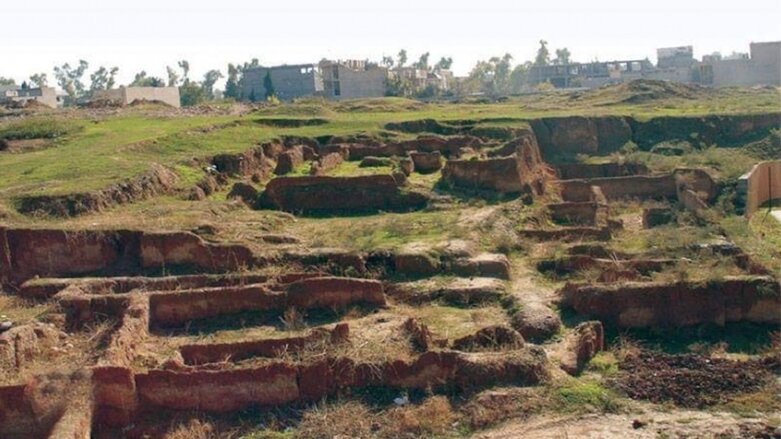The hidden citadel in the heart of Erbil

It is called the “Qalinj Agha” hill, which means “the small citadel” as it is considered small compared to the much more famous and iconic Erbil Citadel.
Qalinj Agha is only one kilometer away from the Erbil Citadel in the heart of the Kurdistan Region capital. Despite this, it’s almost entirely unknown to tourists.
The small citadel has an area of 30,000 square meters, dating back to the fourth and fifth millennium BC, in the era of Hilf, Abeed, and Warka.
The citadel was discovered in 1966 by a team that started excavating the site.
“Excavations discovered 49 ancient tombs,” said Akam Hussein, a local archaeological expert from Erbil. “The tombs are divided into three sections: The first section includes 13 tombs, the second one 32 and the third one four.”
Some of the tombs are small, and experts believe they are tombs of children aged 2-5 years old. Their size is only 90*65 cm.
“These tombs date back to 5,500 years ago,” said Hussein. “Thirty-four of the tombs have a mixture of hay, black, yellow, and green mud, placed towards the northeast or southwest. This tells us that it was a sophisticated process to build and bury the dead in the ancient times.”
What has shocked the experts is that the children’s bodies have been placed in a way that makes it appear they are a baby in their mother’s womb.
“Up to today, we do not know why they have done so, but it proves that tombs were something dear to them,” explained Hussein. “It also proves that science at that time was advanced because they knew the shape and form of a baby in the womb.”
The tombs also show that women at that time had a high social ranking, as their tombs were uniquely built.
“There have buried women in special tombs called burial chambers,” Hussein noted.
The tombs also contain various materials such as necklaces, silver, gold, and many other pieces of jewelry.
The small citadel could attract thousands of tourists a year if promoted well.
“The government should take this seriously and promote it because it would be so interesting for the tourists,” said Abbas Ali, a tourist from Baghdad who visited Erbil with a group.
